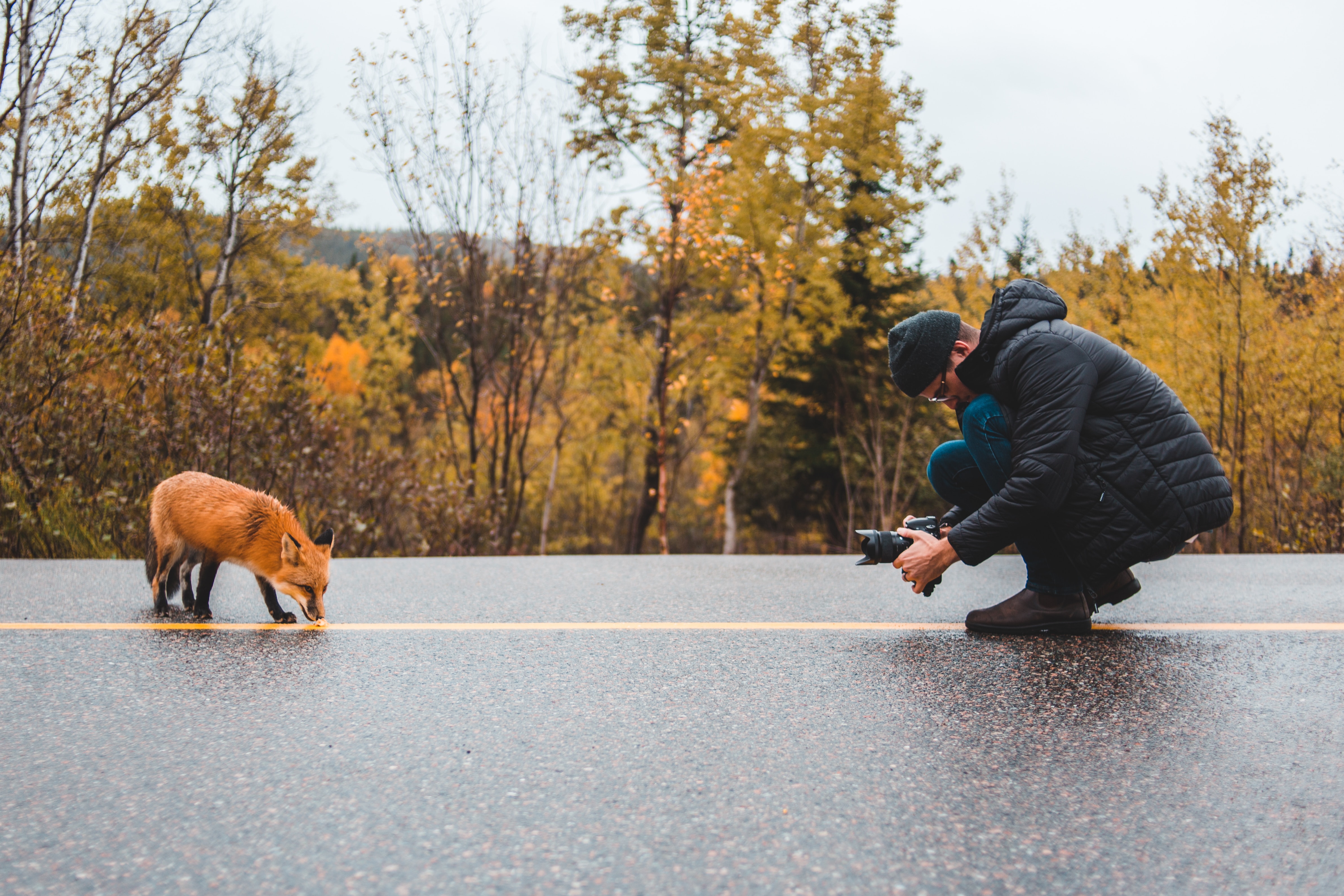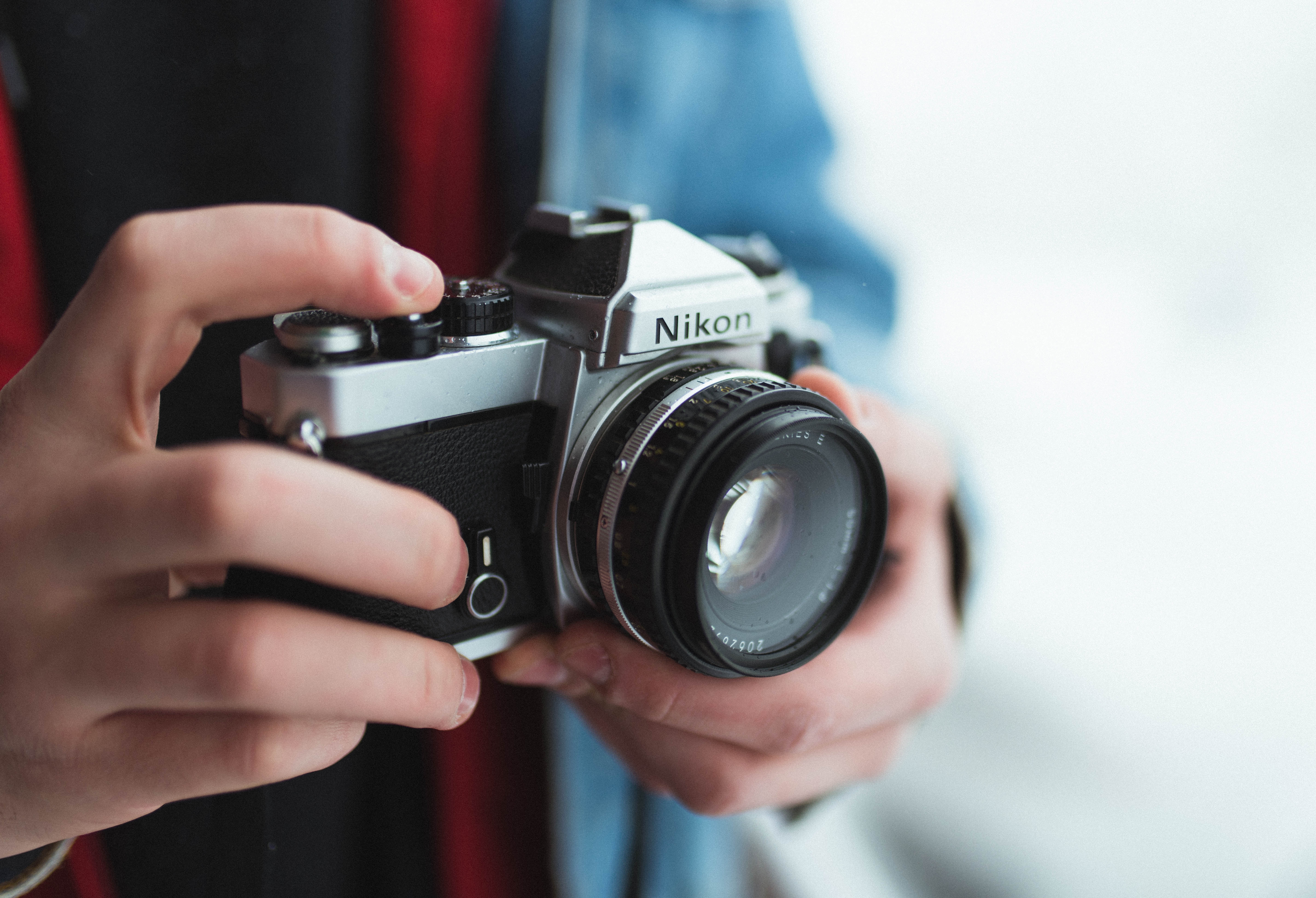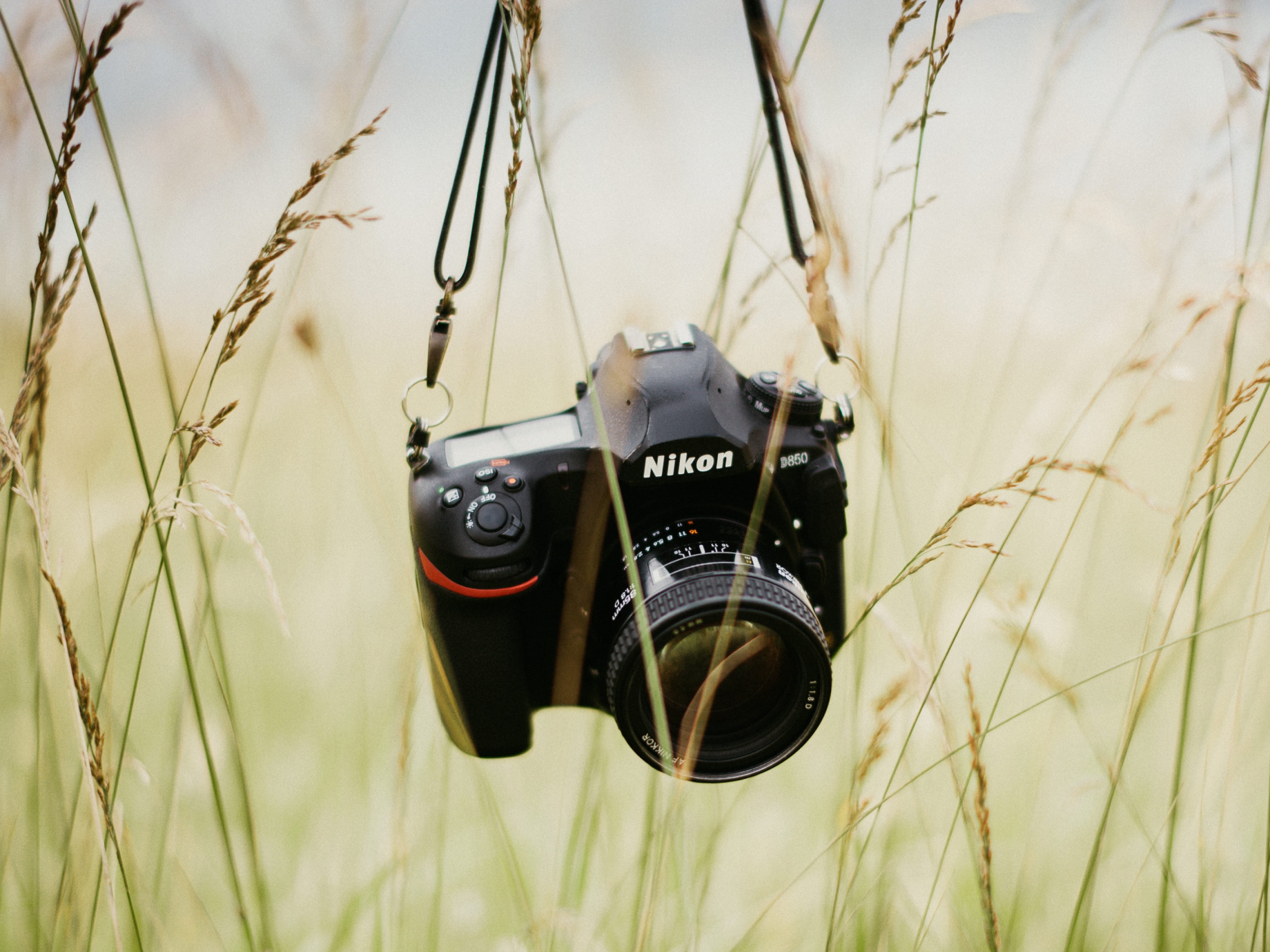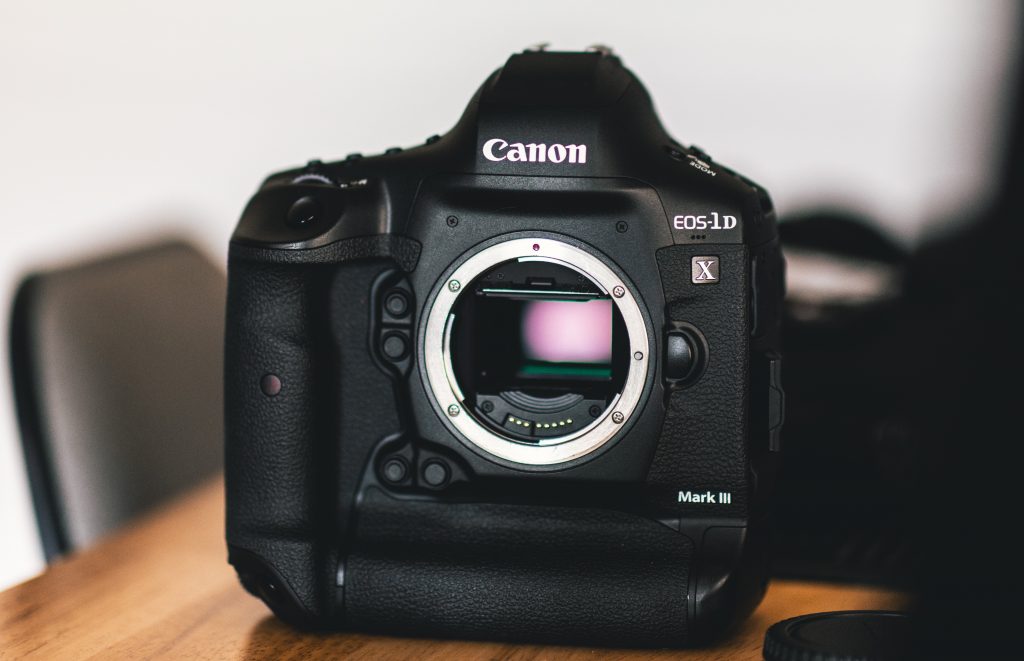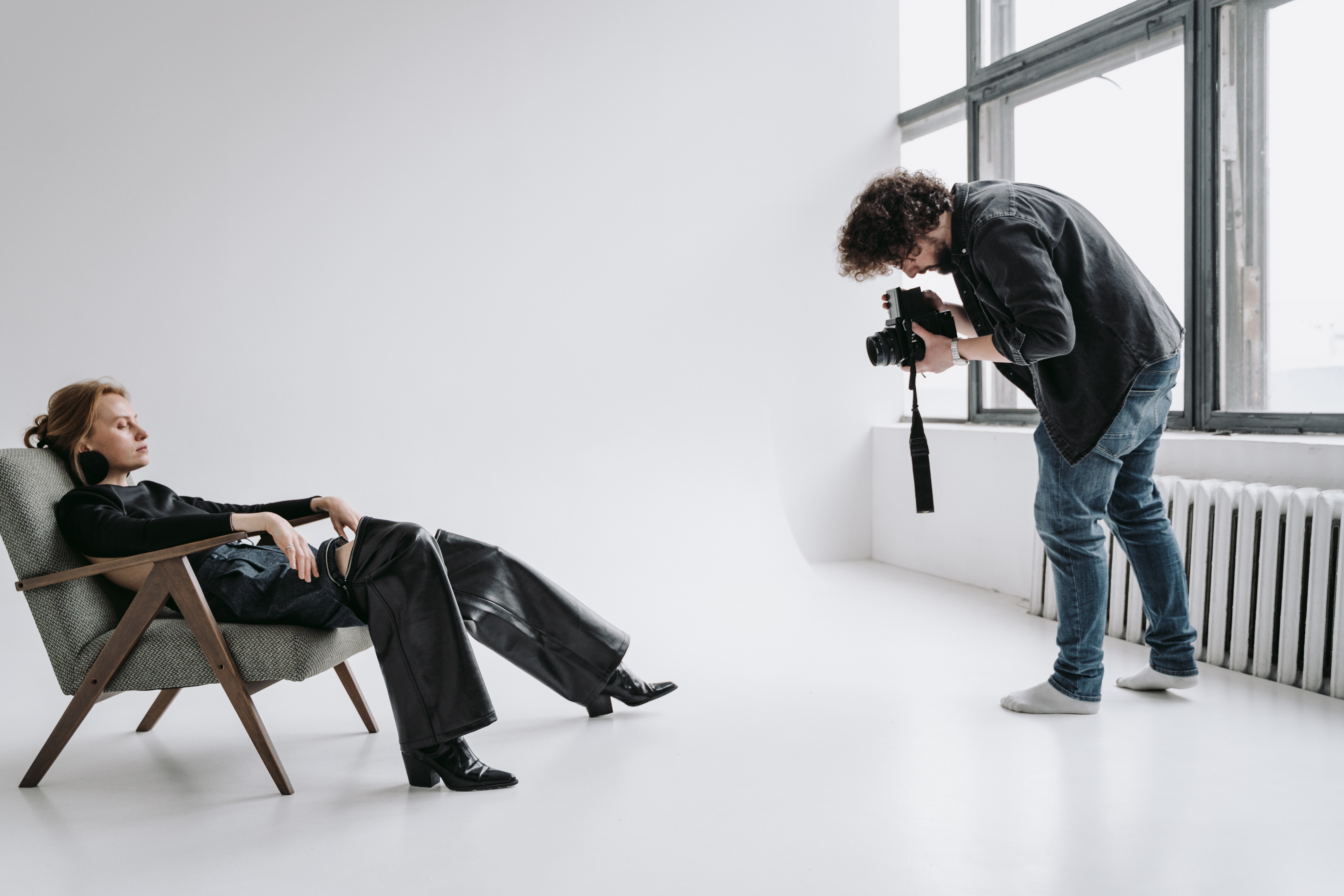
While medium format cameras became popular with film photography, they’ve continued to hold their own in a digital age with the release of digital medium format cameras that create gorgeous and incredibly sharp images. Camera makers like Hasselblad and Fujifilm have changed the game when it comes to offering medium format cameras that are smaller and more affordable than previous models, making these high-resolution cameras more accessible than ever.
In this article we’ll share our top choices for medium format cameras in 2023, which include:
Best Overall Picks: Hasselblad X2D-100C and Hasselblad X1D-50C
Best Medium Format Digital Cameras:
Best Medium Format Film Cameras:
What is a medium format camera?
The term “medium format” originated during the height of the film photography era to describe film frame sizes larger than 35mm film but smaller than 4×5 inch large format sheet film. In today’s digital camera world, medium format cameras have a larger image sensor than their full-frame counterparts.

Are medium format cameras better?
Medium format cameras generally offer superior image quality. They are the preferred high-end choice of many pro photographers, except for fast paced events or where the longest telephoto focal lengths are required.
For film photography the larger film sizes of medium format exhibit less grain than 35mm. The cameras are also faster and easier to use than large format view cameras. Medium format photography is especially popular among portrait and fine art photographers as a way to get better looking prints.
In the realm of digital photography, larger sensor sizes can have more pixels and a higher overall signal-to-noise ratio. The ability to produce cleaner images makes these cameras a top choice for professional photographers who want crisp, detailed images and are willing to pay a premium price for their gear.
Besides the larger frame size, the main differences between medium format and full-frame cameras are:
- The size of the cameras themselves as medium format cameras tend to be larger.
- Many take on a more modular design than full-frame cameras. Several systems feature interchangeable finders, and interchangeable backs are the norm for medium format SLRs from Hasselblad, Mamiya, and Bronica.
- Some form factors like Twin Lens Reflex (TLR) exist almost exclusively in medium format.
- Interchangeable leaf shutter lenses are much more prevalent in medium format systems and provide high shutter speed sync functionality with any strobe.
- They’re made to capture high-quality photos with more dynamic range
- They’re generally going to be a bit more expensive than full-frame options
Best Overall Picks
Hasselblad X2D-100C – starting at $8,000 for body only and Hasselblad X1D-50C – starting at $3,000 for body only
Hasselblad created the first-ever medium format mirrorless option and offers the broadest selection of central shutter lenses (also known as a leaf shutter), which allow flash sync at any speed and make them a favored option for commercial photographers who need maximum control over lighting balance. The 100-megapixel X2D 100C offers tremendous resolution, but the 50-megapixel X1D model still offers the advantages of a larger sensor with plenty of resolution at prices that might save you enough for another lens.
These are professional-level cameras and have the price tag to match all the resolution and features that come with them.
- Pros: At the forefront of medium format camera technology
- Cons: No option for video; while prices are reflective of everything this camera can offer, they can be a limitation for even professional photographers
Top 3 Medium Format Digital Cameras

If you’re in the market for a digital camera that produces the most detailed images, look no further than a medium format digital camera. Here are our picks for the best ones.
Fujifilm GFX 100S – starting at $5,200 for body only
The Fujifilm GFX is a medium format mirrorless powerhouse with a 102MP sensor, a 3.2-inch tilting touchscreen lcd , 5 fps continuous shooting speed and 4K video at 30 fps.
One great thing many professional photographers love about this camera is the portable design that follows the look and feel of traditional full-frame mirrorless camera bodies. The more rugged design by Fuji also makes it a pick for professional landscape photographers who spend a lot of time photographing in the elements.
- Pros: Lightest and most compact body than any other camera with 102MP
- Cons: Limited image stabilization
Fujifilm GFX 50R – starting at $2,590 for body only
The Fujifilm GFX 50R is the best affordable option on our list. It offers many of the same specs as the aforementioned models, with a price tag more similar to the high-end full-frame mirrorless cameras available. The GFX 50R offers a 51.4MP sensor, 3 fps burst shooting speed, and the compact and rugged design photographers have come to expect with Fujifilm’s medium format lineup.
This camera is a great starter option for landscape and nature photographers.
- Pros: One of the more reasonably priced options, making it more accessible to both professionals and aspiring photographers
- Cons: No video option; has been discontinued in production
Leica S3 – starting at $15,700 for body only
The Leica S3 is another top pick for a high-end medium format camera if you’ve got the money to spend on it. As with any Leica camera, its build quality is top of the line with a durable weather-sealed design making it a powerhouse in studio or out in the field. It offers the familiar comfort of an optical DSLR viewfinder without some of the bulk of more modular systems like Phase One or Hasselblad H series cameras while still offering a range of Central Shutter lenses.
The Leica S3 packs a brand new 64 megapixel medium format sensor, expanded 4K video capabilities, and the Leica S lenses offer some of the best-quality optics available.
- Pros: Incredibly high resolution, impressive 4k video for a medium format, Leica S lens capabilities
- Cons: The price tag puts it out of reach for many, but for luxury or high-end professionals, this camera is the holy grail of medium format options!
Top 6 Medium Format Film Cameras

Medium format film cameras There are three different styles of these film cameras: single-lens reflex (SLR), Twin-lens reflex (TLR), and rangefinder cameras. We have more info about film and frame sizes near the end of this article but one thing to remember is any medium format you want to actually use will need to shoot “120” size film (not to be confused with ISO). 120 size rolls are the only available medium format film nowadays.
Here are our choices for the best medium format models.
Hasselblad 500C/M – starting at $750 for body only
Anything in Hasselblad’s 500 series is a great choice and, in fact, this lineup is what launched Hasselbad to acclaim. While the 500 series bodies are touted for their build quality, design, and dependability, it’s really the lineup of remarkable lenses that make Hasselblad 500 series cameras some of the best in the market.
The 500C/M launched in 1970 and was the first to feature an interchangeable focusing screen while keeping the acclaimed Hasselblad modular design and leaf shutter.
Later on the various 503 models added TTL flash metering to the line. One of the best in the series, the 503C/W launched in 1996 and features a new gliding mirror system, for a much improved viewfinder image with telephotos and an optional powered winder, but will cost more than double the 500C/M.
- Pros: High-quality design and extensive lens system; interchangeable film backs
- Cons: The 500C/M is a bit more outdated than other more expensive options in the 500 series lineup
Mamiya C330 – starting at $360 for body only
In 1956, Mamiya began to produce the C series–the first with interchangeable lenses. The Mamiya C330S was the last in the lineup and offers the most features of anything found in the C series before it.
It’s a great option when you want the easy going presence of a TLR without the price tag of a Rollei. The camera will be slightly larger and a bit clunkier but you’ll also have the added versatility of changeable lens options.
- Pros: One of the most budget-friendly medium format film cameras out there
- Cons: Manual focus only; fewer telephoto lens options than some others
Pentax 645N – starting at $815 for body only
The Pentax is a great medium format film camera choice and handles more like a 35mm SLR than perhaps any other medium format. The Pentax 645N is reliable, fast, and offers AF technology, as well as TTL flash metering, making it seem like a more modern camera than some others on the list. The 645N also has an in-camera light meter with three modes, making it ideal for portraits and weddings.
- Pros: More affordable than some others on the list, making it easier to invest in multiple lenses as well
- Cons: Some film photographers might not love the more modern design
Mamiya 7 – starting at $2,600 for body only
The Mamiya 7 is a versatile 6×7 rangefinder that can produce some of the best image quality on film, especially with wide-angle lenses where rangefinder optics tend to have a design advantage by not having to accommodate space for a mirror . It’s a perfect option for landscape photographers who want great quality photos and a wide range of high-quality lenses in a portable body that’s easy to carry along on outdoor adventures.
The Mamiya 7 II offers improved features like the ability to do multiple exposures, and an improved coating on the rangefinder window, and an easier to use exposure compensation control, but at a noticeable price increase.
- Pros: Great high-quality lens lineup; compact for 6×7
- Cons: Rangefinders have some focus limitations and a learning curve
Mamiya 645 Series – starting at $500 for body only
This is an extremely popular system and one of the most affordable, making the cameras a perfect choice for a budget-friendly foray into medium format film photography. The first few generations of the Mamiya 645 series cameras were manual focus. In the late 90s Mamiya introduced the 645AF an autofocus system. While the autofocus systems on the later models opened up the use of AF lenses, these lenses couldn’t be used with earlier manual versions and the 645AF system did away with interchangeable finders..
- Pros: Large library of lenses; extremely affordable for beginners
- Cons: First generations do not have interchangeable backs
Mamiya RZ67 – starting at $800 for body only
The Mamiya RZ67 is another stellar medium format film SLR camera that followed the company’s popular RB series. It’s known for producing stunning portraits and macro photography made easier by a rotating film back and bellows focusing plus built-in close-focus exposure compensation chart. Mamiya even made a tilt-shift adapter. This release also offered updated lenses and additional accessories like a motor winder and auto exposure prisms. The later RZ67 Pro II model adds amenities like half shutter speeds and an additional fine focus control.
- Pros: Lighter and more compact than the RB; great focusing experience on a huge ground glass
- Cons: Some photographers have found the build to feel a bit less durable than the RB versions
Overall Honorable Mentions

Hasselblad 907X – starting at $12,275 for body and lens kit
The Hasselblad 907X system blends the notable design elements of Hasselblad film series cameras with the unparalleled image quality and technical features of their medium format digital cameras, so you get the best of both worlds in one camera. The 907X is the most compact camera Hasselblad has created so far, but the size packs a lot of punch when it comes to features.
The 907X boasts a 43.8 x 32.9mm 50MP CMOS sensor for super high-resolution photos, a 14-stop dynamic range, 16-bit color depth, and an ISO range of 100-25,600. This sensor produces Hasselblad’s natural color tones for stunning images every time.
- Pros: Combines the best of Hasselblad film and digital features in the smallest camera body yet
- Cons: The price tag is steep for some, but it does come with a lens
Fujifilm GFX 50S II – starting at $3,000 for body only
The GFX 50S II is Fujifilm’s third release of a medium format mirrorless camera with a 50MP sensor and likely one of the more accessible options available. It was the first Fujifilm medium format camera to offer in-camera image stabilization, which is a big win for many professional photographers.
It would be a great option for landscape photographers who want a sturdy camera with great features at an affordable price.
- Pros: In-body image stabilization and fully tilting display; modular EVF
- Cons: Some photographers may prefer the rangefinder design of the 50R
Phase One XF – starting at $2,700 for body only
Another honorable mention is the Phase One XF a modular medium format DSLR that uses a range of removable digital backs.. While the XF is generally thought of as a studio camera, in certain configurations it can still hold its own out in the field on location. It also features 16-bit raw capture, dual batteries, pro grade build quality, built-in flash controller, and supports leaf shutter lenses.
At its release in 2016, the XF was priced around $48,990, but since the release of its 150MP predecessor the XT you can find the XF priced under $3,000.
- Pros: Incredibly high resolution perfect for studio photography
- Cons: No weather sealing; slower autofocus
Pentax 645Z – starting at $2,500 for body only
Last on our list is the Pentax 645Z. The 645Z has a 51.4MP 43.8 x 32.8mm CMOS sensor, which creates extremely crisp high-resolution images with great shadow detail and color. The 645Z’s low noise sensor also allows shooting at very high ISOs up to 204800 with impressive results. This model is one of the few medium format professional cameras available that is both budget friendly and feature-heavy.
It’s perfect for both studio photography and field photography with a rugged design and mindful control placement.
- Pros: Affordable option with tons of specs like autofocus, metering, low-noise sensor, and more
- Cons: One of the older models on the list (released in 2014)
What are the advantages of medium format cameras?

If you’re on the fence about whether to make the leap to a medium format camera, here’s a recap of are some of the advantages to consider:
- Larger full-frame sensors: the larger sensor gives you higher resolution and image quality.
- Larger sensors means larger pixels: the larger sensor also means it can fit more megapixels. Cameras with smaller sensors have to shrink pixel size in order to get them to fit in a smaller area. With medium format cameras, you get larger pixels–and more of them!
- Allows for wider dynamic range: the increased number and size of pixels in the sensors provide better dynamic range, which determines how much detail the camera can pull from both light and dark areas. While a full-frame camera typically has 10 stops of dynamic range, medium format cameras can provide 15 or more!
- Greater control over depth of field: these cameras make it easier to create a shallow depth of field as you’re able to shoot with the widest aperture on your lens or “wide open” as many photographers will refer to it. They also create incredible bokeh.
- Flexibility for creative format ratios: Medium format cameras provide more flexibility for creative format ratios. They have a variety of different aspect ratios without experiencing a reduction in resolution.
Things to Consider Before Buying

Before purchasing a medium format camera, here are some helpful considerations whether you’re in the market for your first model or are looking to add to your gear collection.
Digital vs. Film
While the film vs digital debate is somewhat a personal preference, there are some key details that may help you decide which is right for you. First, medium format film cameras tend to be more affordable than digital medium format, which makes them a good option for photographers who are on a budget. Secondly, the image quality you get with a digital medium format is unparalleled, but you’ll still get richer and crispr detail in a film camera than a 35mm.
Early digital medium format rigs added removable backs to modular DSLR systems from Hasselblad or Mamiya (later acquired by Phase One) and sensors often weren’t as large as 645 format. Later medium format SLRs systems are more tightly integrated and some of the highest resolution backs have sensors that nearly fill an entire 645 frame.
Mirrorless medium format systems have the freedom of not needing to work with an existing selection of focal lengths and that’s allowed for the much more compact camera. Alls the mirrorless medium format systems have coalesced around sensors sized ~32.9×43.8mm for ~66% more image area than full frame.
Film medium format cameras come in a broader variety of aspect ratios and frame sizes. The three most common medium format film frame sizes are 645 (nominally 6×4.5cm, actual image area ~56x42mm), 6×6 (also known as ‘two and a quarter square’, actual image area 56x56mm), and 6×7 (nominally 6x7cm, actually 56x72mm). There are also a few 6×8, 6×9 options and even 6×12 or 6×17 medium format panorama cameras from brand like Fujifilm, Linhof, Noblex, Widelux, and Cambo. There have been a few competing standards for medium format film and spool sizes over the course of the twentieth century (“616 film”, ”120 film”, ”620 film”, and “220 film” ) but “120 film” is the enduring standard and remaining size being produced by Kodak, Fujifilm, Iford and others. On a roll of 120 film you’ll generally get 15 frames of 645 format images (a few cameras and backs can squeeze 16 frames with extra tight spacing tolerances); the same roll of 120 film can yield 12 frames of 6×6, 10 frames of 6×7, 9 frames of 6×7, 6 frames of 6×12, or 4 frames of 6×17 images.
Lastly, the film photography process is a different aesthetic and art form that is appreciated by many photographers. However, if you are a professional photographer making a living off your fine art photography, you’ll may want a digital option that can quickly produce massive prints with less noise or grain.
Sensor Size and Resolution
The next choice you have is sensor size and resolution. While all medium formats have larger sensors and are able to fit more megapixels and/or larger pixels into the sensors than their 35mm or full-frame counterparts, the size of sensor varies somewhat within the medium format lineup and that can affect your focal length choices
To decide what will work for you, determine how large a sensor and how much resolution you need for your photography. The cameras on our list range from 50MP all the way to 100MP, so understanding what you output needs are is key to picking the best camera for you–and potentially saving some money!
Image Quality
Generally, you’re going to get incredible image quality with either medium format types, however a digital camera will have a leg up over a film camera on the overall detail you’re able to achieve in your photography.
Ergonomics and Size
If you’re used to shooting with digital or mirrorless cameras, the ergonomics and design of some medium format options may take some getting used to. In addition to being larger than most cameras, they are often designed in a more modular way.
Price
Price is a big factor when shopping. These cameras are generally more expensive than full-frame sensor cameras and for the latest model, you can expect to pay anywhere from $5,000 to upwards of $25,000. And while medium format film cameras are considerably more affordable than their digital counterparts, they are still usually more expensive than 35mm film cameras. Even if you have a healthy budget for your gear, the best way to save a bit overall is to buy used in excellent or like new condition.
Shop High-Quality Used Medium Format Cameras

Medium format cameras produce higher resolution images than any other cameras available for professionals. And while the price tag on some may seem daunting, buying used is the best way to get the most for your money. Remember to always buy from a company that has a detailed grading system and a renowned reputation for high-quality used medium format digital and film cameras.

